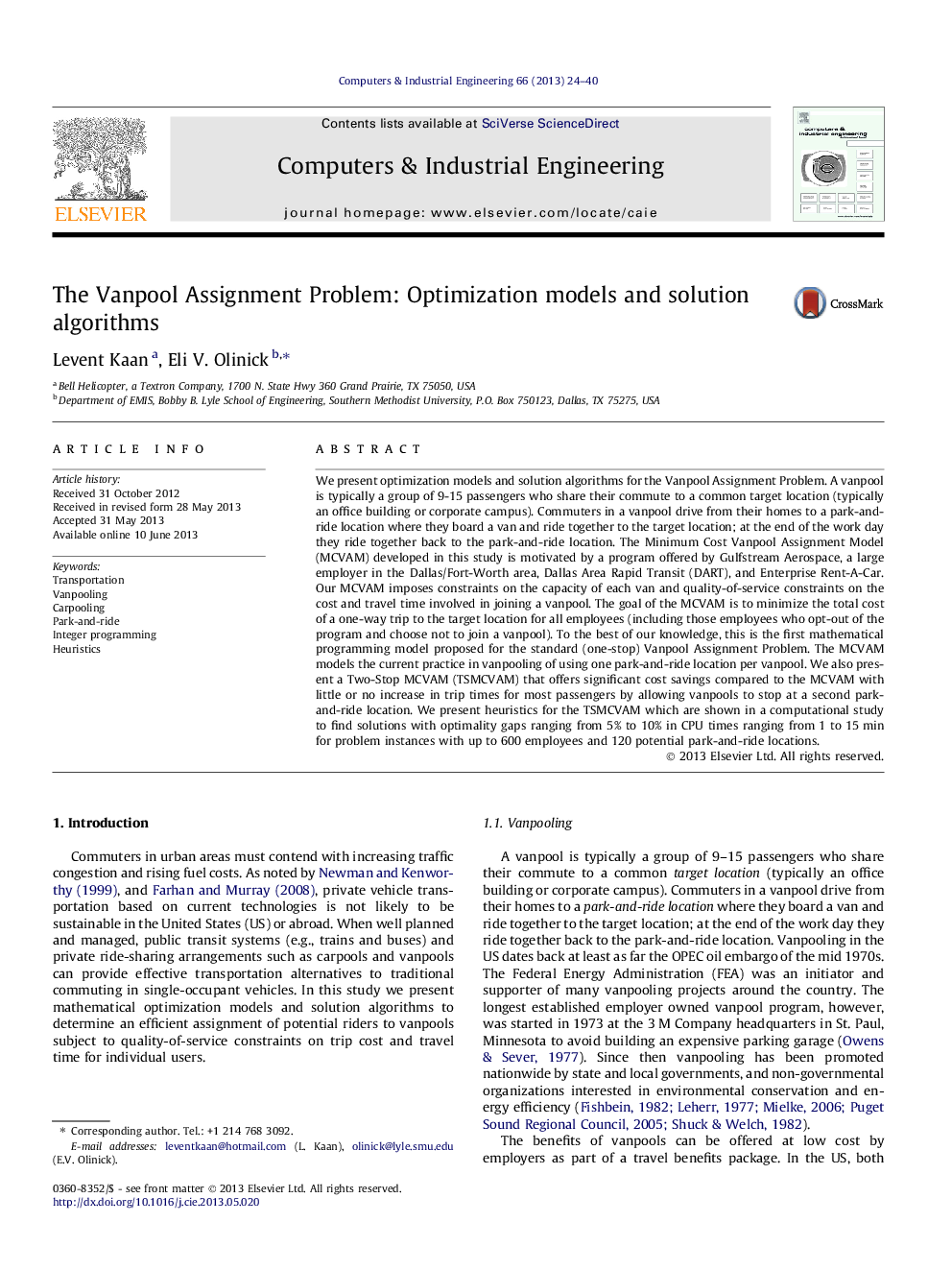| کد مقاله | کد نشریه | سال انتشار | مقاله انگلیسی | نسخه تمام متن |
|---|---|---|---|---|
| 1134222 | 956060 | 2013 | 17 صفحه PDF | دانلود رایگان |

• Cost minimization of a typical employer sponsored ridesharing program is model as an integer linear program.
• Analysis of optimal solutions reveals that a minor change in program policy could yield significant savings.
• The ILP model extended to include new policy is difficult to solve with a straight-forward application of branch-and-bound.
• Effective heuristics are developed to quickly find high quality solutions.
We present optimization models and solution algorithms for the Vanpool Assignment Problem. A vanpool is typically a group of 9-15 passengers who share their commute to a common target location (typically an office building or corporate campus). Commuters in a vanpool drive from their homes to a park-and-ride location where they board a van and ride together to the target location; at the end of the work day they ride together back to the park-and-ride location. The Minimum Cost Vanpool Assignment Model (MCVAM) developed in this study is motivated by a program offered by Gulfstream Aerospace, a large employer in the Dallas/Fort-Worth area, Dallas Area Rapid Transit (DART), and Enterprise Rent-A-Car. Our MCVAM imposes constraints on the capacity of each van and quality-of-service constraints on the cost and travel time involved in joining a vanpool. The goal of the MCVAM is to minimize the total cost of a one-way trip to the target location for all employees (including those employees who opt-out of the program and choose not to join a vanpool). To the best of our knowledge, this is the first mathematical programming model proposed for the standard (one-stop) Vanpool Assignment Problem. The MCVAM models the current practice in vanpooling of using one park-and-ride location per vanpool. We also present a Two-Stop MCVAM (TSMCVAM) that offers significant cost savings compared to the MCVAM with little or no increase in trip times for most passengers by allowing vanpools to stop at a second park-and-ride location. We present heuristics for the TSMCVAM which are shown in a computational study to find solutions with optimality gaps ranging from 5% to 10% in CPU times ranging from 1 to 15 min for problem instances with up to 600 employees and 120 potential park-and-ride locations.
Journal: Computers & Industrial Engineering - Volume 66, Issue 1, September 2013, Pages 24–40